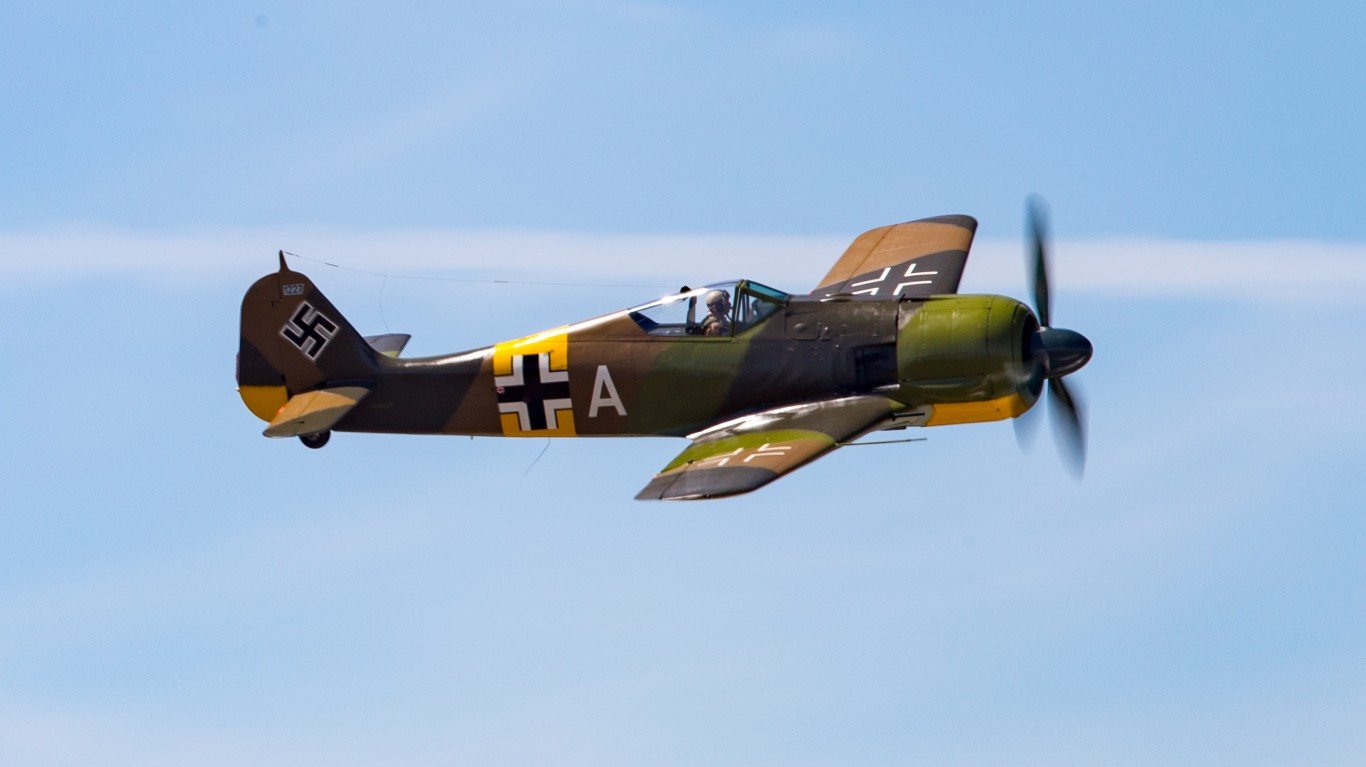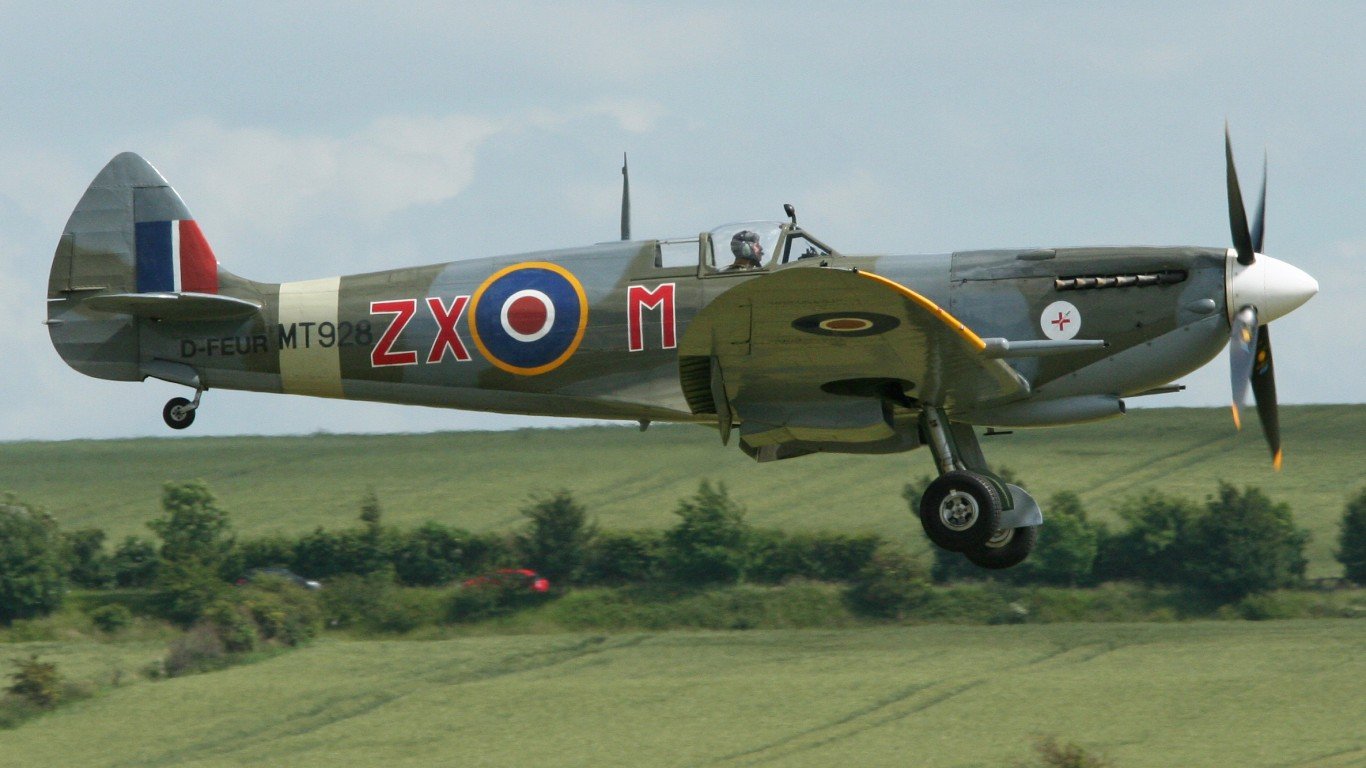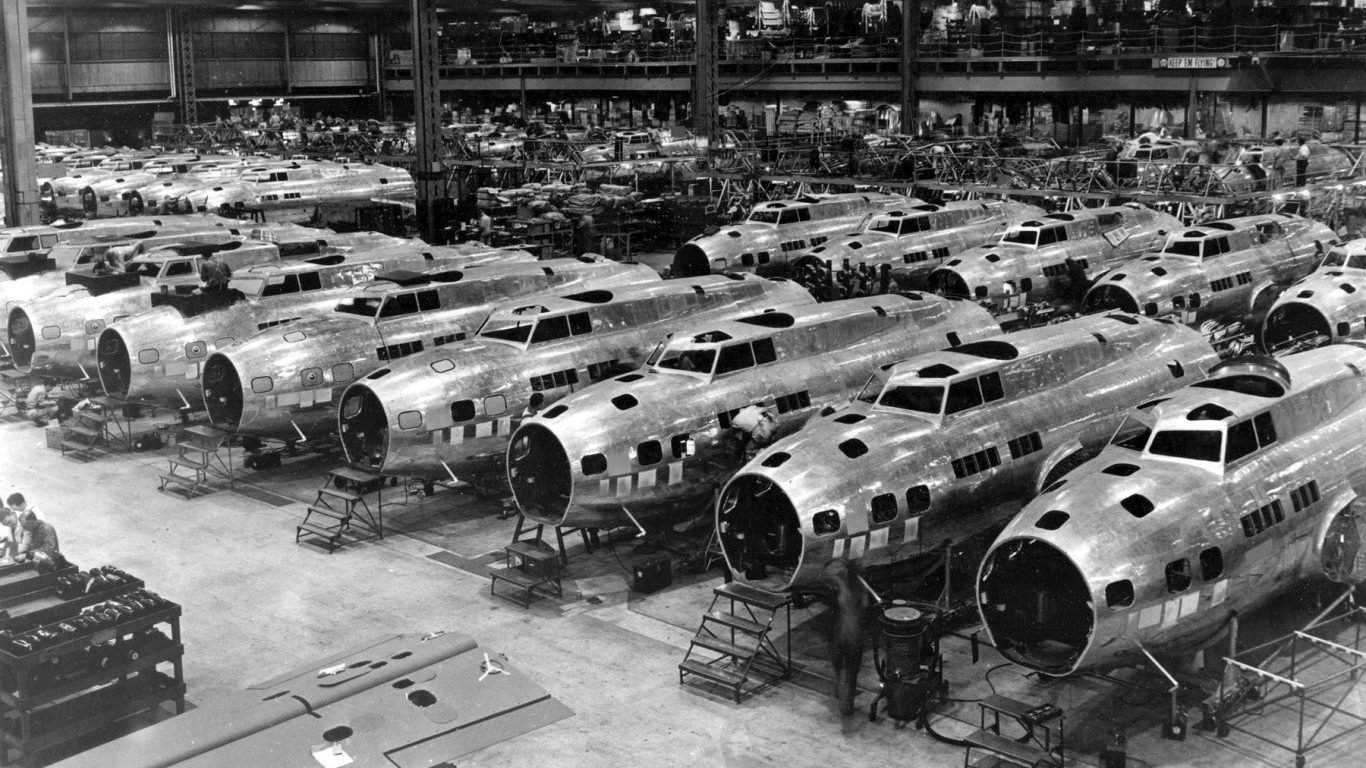

Next year will be 80 years since the D-Day invasion commenced at Normandy, one of the largest invasions of any war in modern history. While most Americans who know about the day are aware of the heroic assault by infantry and mobile artillery on the beaches, as well as the naval bombardment preceding the attack, what is often overlooked about that D-Day was the role the Air Force played. Also see: The 16 Biggest Military Invasions of the Last Century.
After the invasion, General Dwight Eisenhower toured the Normandy beaches. He remarked, “I wouldn’t be here without air supremacy.” The crucial role of air power was evident through reconnaissance, cargo transport, tactical and strategic bombing, as well as aerial combat, granting a decisive advantage.
World War II spurred rapid military aircraft technological progress. From jet propulsion to radar, pivotal advancements emerged between 1939 and 1945, many of which are now taken for granted.
Using data from the U.S. Air Force, as well as multiple aviation publications, 24/7 Wall St. identified the most-produced military aircraft of WWII. Over 10,000 units of each plane on this list were manufactured for the war effort, rolling off assembly lines in Germany, Japan, the Soviet Union, the United Kingdom, and the United States.
Initially, Japan and Germany held air superiority, using it to eliminate foes and outmaneuver Allied aircraft. The Japanese “Zero” fighter boasted a 12-to-1 kill ratio, while the German Focke-Wulf Fw-190 excelled against weaker Allied counterparts. (Here is a look at 13 massive air battles that changed world history.)
But this dynamic shifted from 1942 onwards. Advanced British and American fighters, like the Spitfire and P-51 Mustang, tilted the balance. These aircraft secured vital victories, escorting bombers and aiding troop advancement, culminating in Japan’s unconditional surrender. (Here is a look at the cities destroyed by the USA in World War II.)
While cargo planes played a significant WWII role, transporting troops and materials in Europe and the Pacific, fighter and bomber aircraft saw greater production. Consequently, no transport planes rank among the top WWII aircraft.
Click here to see the most produced military planes during WWII.

17. Mitsubishi A6M2 ‘Zero’
> WWII production count: 10,939
> Aircraft type: Carrier-based fighter
> Country of origin: Japan
The Mitsubishi A6M2 Type 0 Carrier Fighter was the most-produced fighter in the Japanese fleet in WWII. Between 1940 and 1945, Japan produced nearly 11,000 A6M2 aircraft. Zeros dispatched from six aircraft carriers were involved in the Dec. 7, 1941, bombing of Pearl Harbor, ultimately drawing the United States into the war.
An asset early in the war, the Zero had a kill ratio of 12-to-1 up until 1942, the year Allied forces developed superior air technology. Later in the war, Japan increased both the armor and engine output of the Zero. However, the changes resulted in a far less nimble aircraft. By October 1944, Zeros were being used by kamikaze pilots, who made deliberate suicidal crashes.
[in-text-ad]
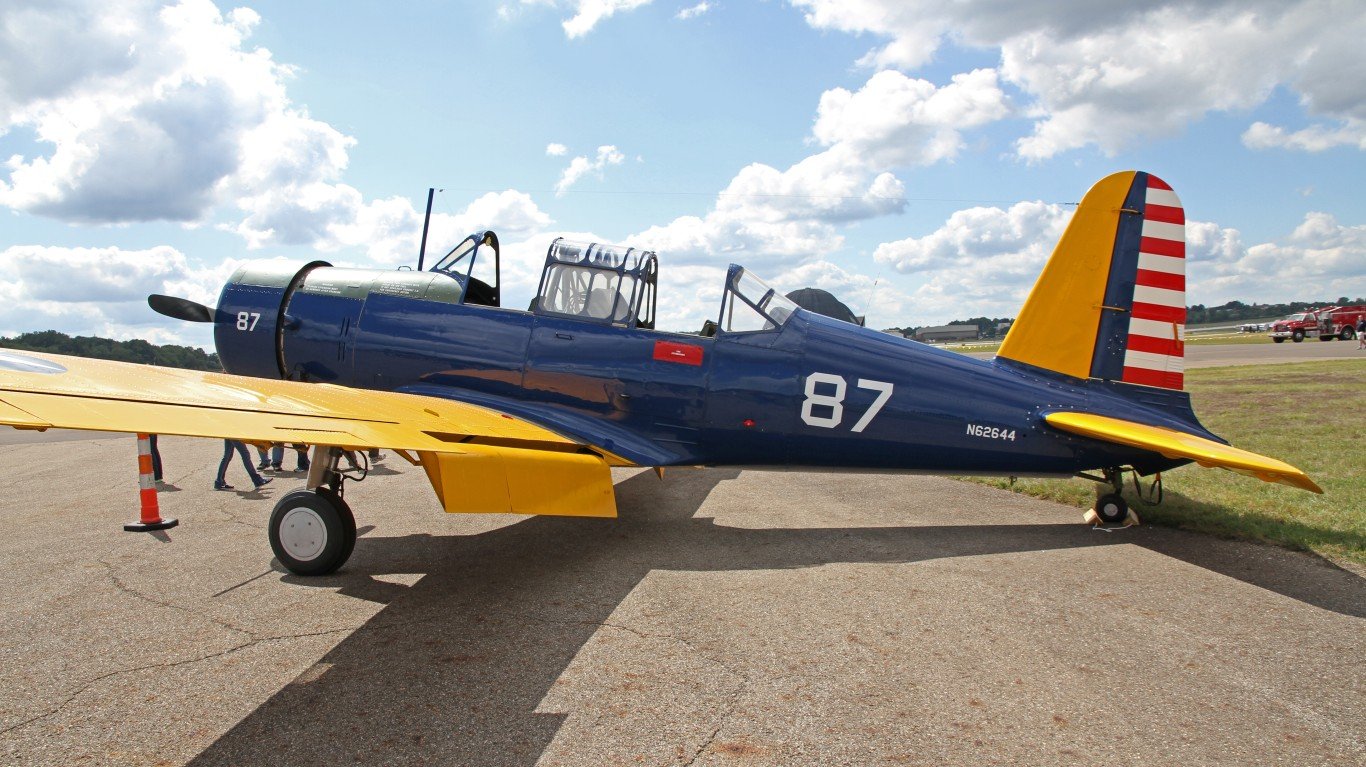
16. Vultee BT-13 Valiant
> WWII production count: 11,000
> Aircraft type: Trainer
> Country of origin: United States
The Vultee BT-13 Valiant was one of the most widely produced aircraft of WWII, though it never saw combat. Used exclusively for training, the Vultee was simpler to operate than a bomber or jet but still more complex than primary combat aircraft.

15. Vickers Wellington
> WWII production count: 11,461
> Aircraft type: Bomber
> Country of origin: Great Britain
The Royal Air Force relied on the Vickers Wellington more than any other bomber in WWII. A reported 11,461 Wellington bombers were produced by the U.K., and the twin-engine, medium bomber was used in over half of all bombing raids over Germany. After the war, the aircraft was used for turbo jet testing before being retired in March 1953.

14. Grumman F6F Hellcat
> WWII production count: 12,275
> Aircraft type: Carrier-based fighter
> Country of origin: United States
Over a three-year period during the war, the U.S. rolled 12,275 Grumman F6F Hellcat fighter planes off the assembly lines. An asset in the Pacific Theater, the Hellcat could carry up to 2,000 pounds of bombs and featured six .50 caliber machine guns. The Hellcat accounted for 75% of the U.S. Navy aerial victories during the war. Hellcats had a cruising speed of 168 mph and a 1,090-mile range.
[in-text-ad-2]
13. Vought F4U Corsair
> WWII production count: 12,571
> Aircraft type: Fighter
> Country of origin: United States
The Vought F4U Corsair was both a land and carrier-based fighter plane. Favored by U.S. Marines in the Pacific, and also included in British and New Zealand fleets, the Corsair boasted a maximum payload of 4,000 pounds of bombs or eight 5-inch rockets and had six .50 caliber machine guns or two 20mm cannons. It had a maximum speed of 453 mph and a maximum range of 900 miles.
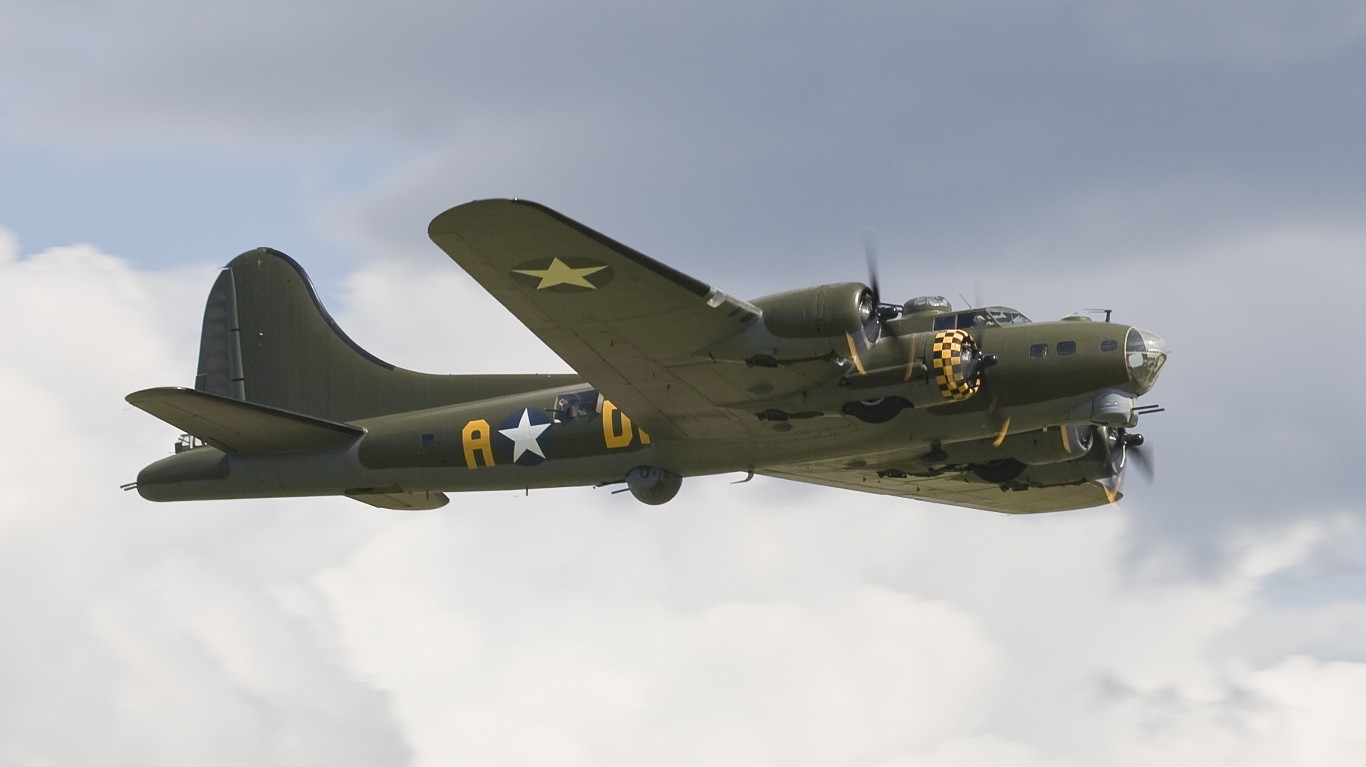
12. B-17 Flying Fortress
> WWII production count: 12,692
> Aircraft type: Bomber
> Country of origin: United States
Nicknamed the Flying Fortress, the heavily armored B-17 heavy bomber could suffer multiple hits without going down. The aircraft was equipped with 10 .50 caliber machine guns, one .30 caliber machine gun, was able to carry up to 4,200 pounds of bombs, and had a maximum range of over 3,000 miles. The B-17 was used for daytime air raids over Germany and also targeting Japanese shipping operations in the Pacific. Most B-17 were produced by Boeing, though several thousand were also made in a joint effort between Douglas and Lockheed.
[in-text-ad]
11. Curtis P40-Warhawk
> WWII production count: 13,738
> Aircraft type: Fighter
> Country of origin: United States
Between 1938 and 1944, 13,738 Curtis P40-Warhawk fighter planes were manufactured. Though eclipsed by advances in aviation technology by the end of WWII, the Warhawk was the best fighter available to the United States at the outbreak of the war. Powered by a 1,150 horsepower engine, the Warhawk had an 850-mile range and a maximum speed of 362 mph. Warhaws were equipped with six .50 caliber machine guns and up to 700 pounds of bombs.
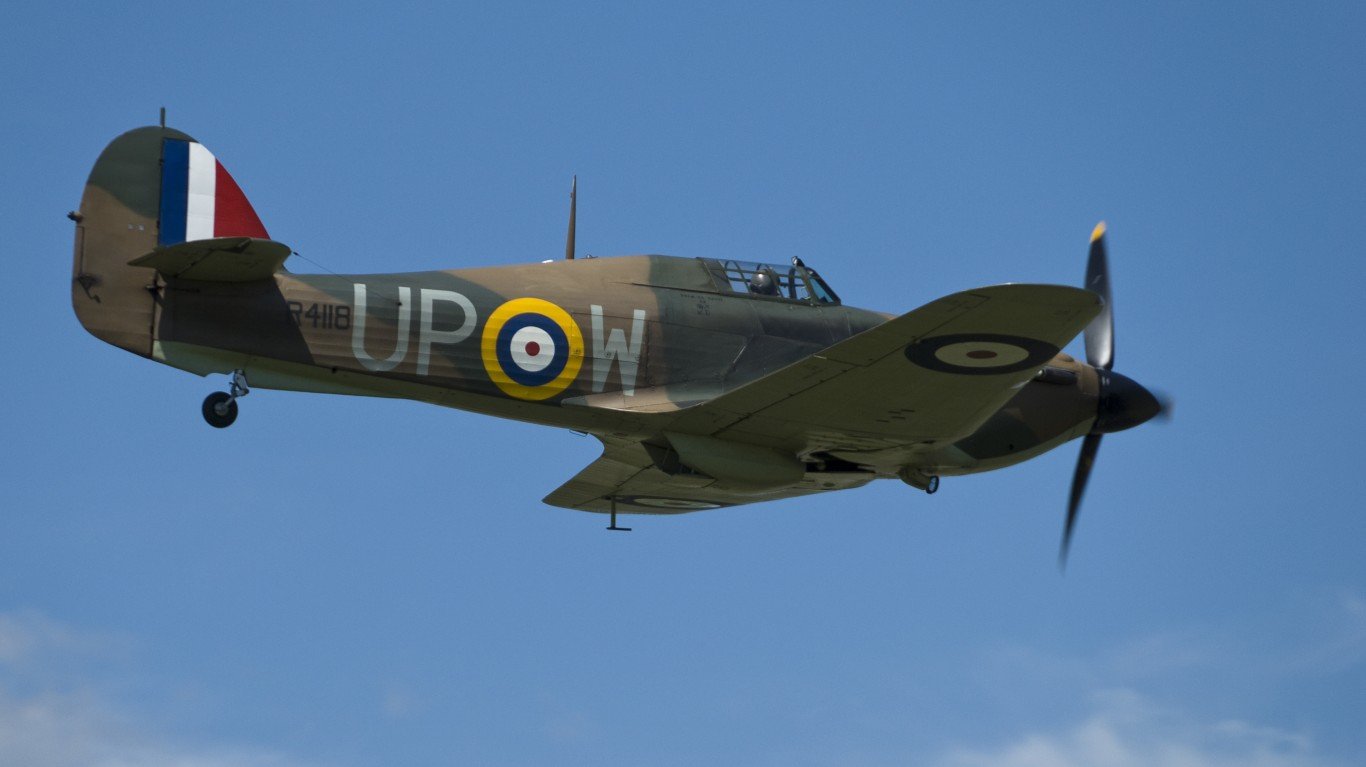
10. Hawker Hurricane
> WWII production count: 14,483
> Aircraft type: Fighter
> Country of origin: Great Britain
Nearly 14,500 Hawker Hurricane fighters were produced from 1937 to 1944. The Royal Air Force had 32 Hurricane squadrons during the war, and these planes were credited with 60% of enemy aircraft destruction during the Battle of Britain. The Hurricane’s success is partially attributable to its durability under fire. Hurricanes had a maximum range of 600 miles and a top speed of 340 mph.
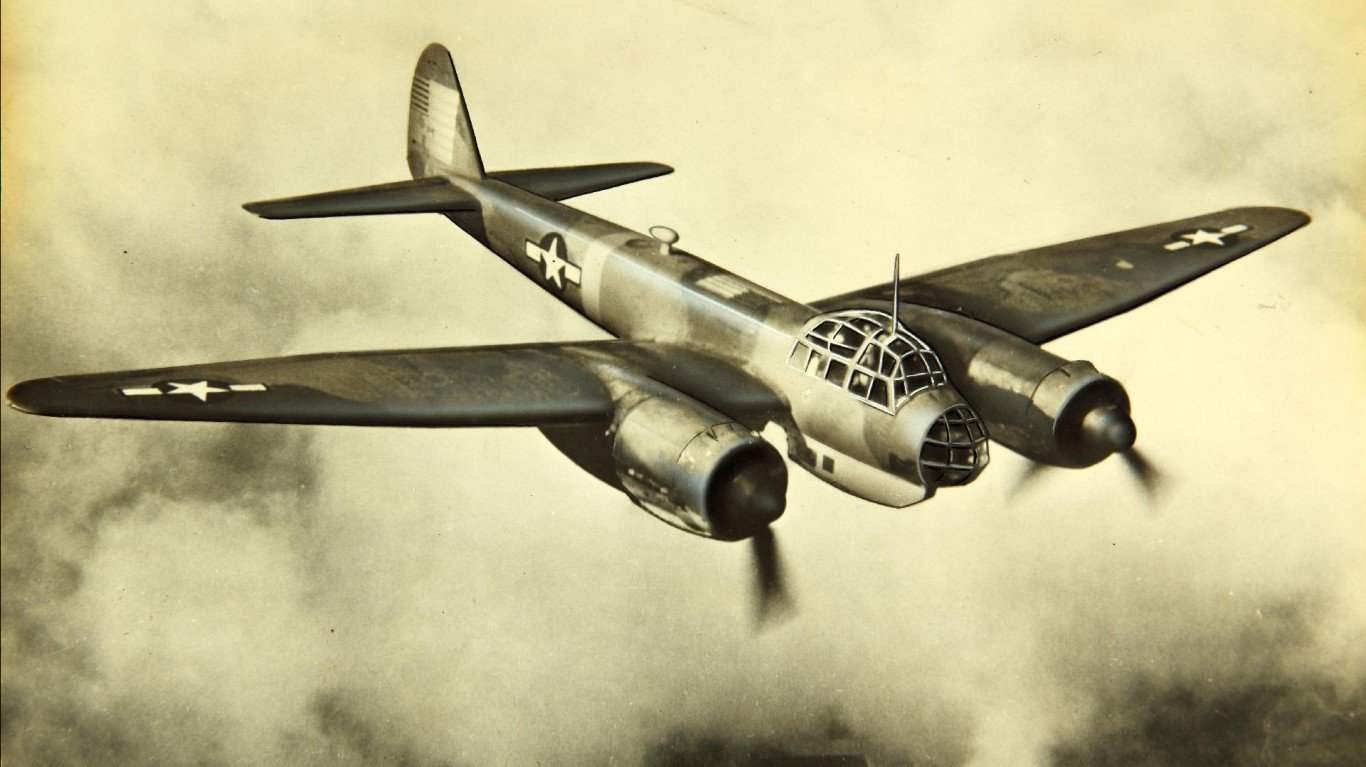
9. Junkers Ju-88
> WWII production count: 14,676
> Aircraft type: Multi-role
> Country of origin: Germany
The Junkers Ju-88 was one of the primary aircraft used by the Luftwaffe in WWII. A multirole plane, the Ju-88 was used for bombing raids, fighting, and reconnaissance. Though widely recognized as the most versatile aircraft in the war, Ju-88s were handicapped by weak armor.
The Ju-88 was famously deployed in the Battle of Britain. Germany produced nearly 14,700 Ju-88s for the war effort.
[in-text-ad-2]
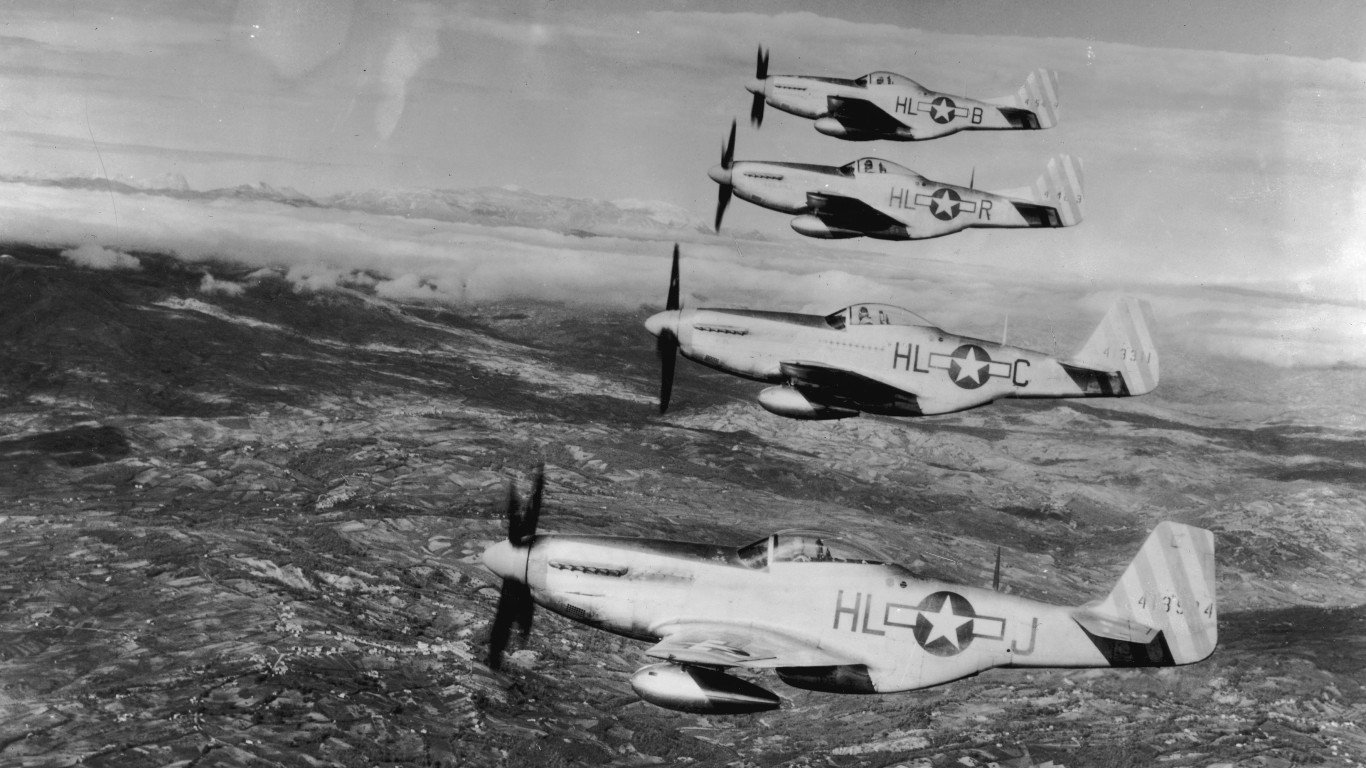
8. P-51 Mustang
> WWII production count: 14,686
> Aircraft type: Fighter
> Country of origin: United States
Originally made by the United States for export to Great Britain, the P-51 Mustang was a long-range, high-altitude fighter used for escorting heavy bombers into raids over Germany. With a 1,000-mile range, the Mustang could fly from the U.K. to Berlin and back without refueling. Also flown by the Tuskegee Airmen, Mustangs were outfitted with six .50 caliber machine guns and could also carry up to 2,000 pounds of bombs or 10 5-inch rockets.
When the Mustang entered the European Theater in 1944, it ended the Luftwaffe’s air superiority over the continent.
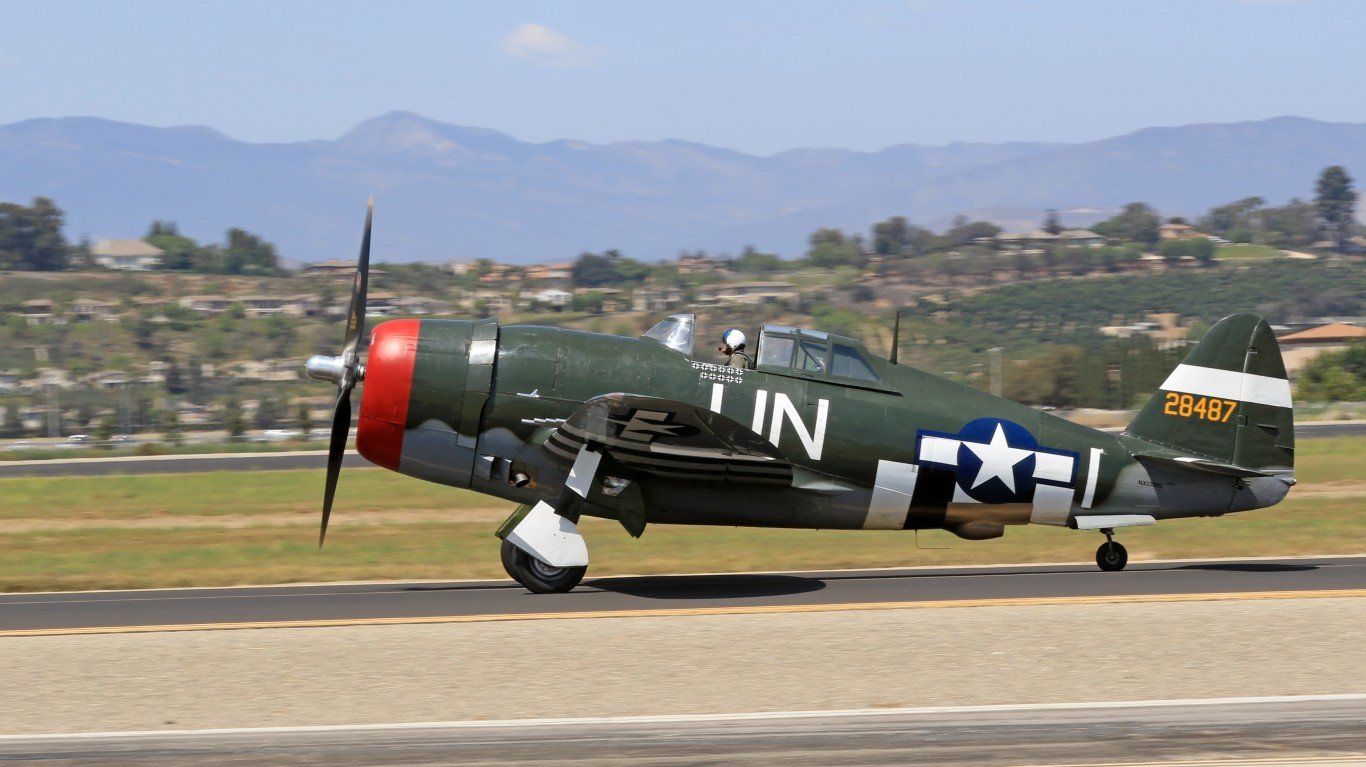
7. P-47 Thunderbolt
> WWII production count: 15,683
> Aircraft type: Fighter
> Country of origin: United States
The heaviest single-engine fighter used by any country during the war, the P-47 Thunderbolt was also the most widely used American fighter aircraft, with nearly 15,700 units produced between 1941 and 1945. The plane’s weight was offset by a 2,000 horsepower engine that had a top speed of 433 mph and an 800 mile range.
With eight .50 caliber machine guns and as much as 3,000 pounds of ordnance, the Thunderbolt was an effective ground attack plane, credited with destroying a reported 9,000 trains, 86,000 trucks, and 6,000 armored vehicles, in addition to 4,000 enemy aircraft. It is considered the most consequential aircraft in the European Theater.
[in-text-ad]

6. Yakovlev Yak-9
> WWII production count: 16,769
> Aircraft type: Fighter
> Country of origin: Soviet Union
The Yakovlev Yak-9 was the most-produced Soviet fighter aircraft in WWII, with an estimated 16,769 units built. Powered by a 1,650 horsepower engine, the Yak-9 had a top speed of 374 mph and was noted for being relatively low maintenance. Yaks were deployed during the Battle of Stalingrad, helping the Soviet’s push back the Nazi invasion.

5. Consolidated B-24 Liberator
> WWII production count: 18,190
> Aircraft type: Bomber
> Country of origin: United States
The most widely produced American aircraft during WWII was the Consolidated B-24 Liberator heavy bomber. The “Liberator” moniker was conceived of by the British following the B-24’s key role in the Battle of Britain. The Liberator was a capable anti-submarine aircraft that took out German U-boats and bombed Axis targets across Germany and the Mediterranean.
Powered by four 1,200 horsepower engines, the Liberator had a maximum range of 2,850 miles, was outfitted with 11 .50 caliber machine guns, and could carry 8,000 pounds of bombs.
4. Focke-Wulf Fw-190
> WWII production count: 20,000+
> Aircraft type: Fighter
> Country of origin: Germany
The Nazi war machine produced over 20,000 Focke-Wulf Fw-190 fighter planes during WWII. Highly maneuverable, the Fw-190 was a superior dogfighter, for which, throughout much of the war, the Allied powers had no answer.
The aircraft had a 2,240 horsepower engine, a top speed of 426 mph, and a maximum range of 520 miles. It was also equipped with two 20mm MG 151 cannons in its wings and two 13mm MG 131 machine guns in its nose.
[in-text-ad-2]
3. Supermarine Spitfire
> WWII production count: 20,351
> Aircraft type: Fighter
> Country of origin: Great Britain
The Supermarine Spitfire was the most iconic and most widely produced British aircraft of WWII, with over 20,000 units manufactured during its lifetime. Spitfires came with either a 1,030 or 2,035 horsepower engine, with top speeds ranging from 364 mph to 450 mph. Equipped with two to four 20mm cannons, four Browning .303 machine guns, and up to 500 pounds of bombs, Spitfires were used in both defensive and offensive operations across Europe.
Spitfires were not only flown by the Royal Air Force, but also by nine Allied nations, including the United States in November 1942 during Operation TORCH in North Africa. The Spitfire was highly maneuverable, relatively fast, and able to fly at high altitude, giving it an advantage over the Luftwaffe during the Battle of Britain.
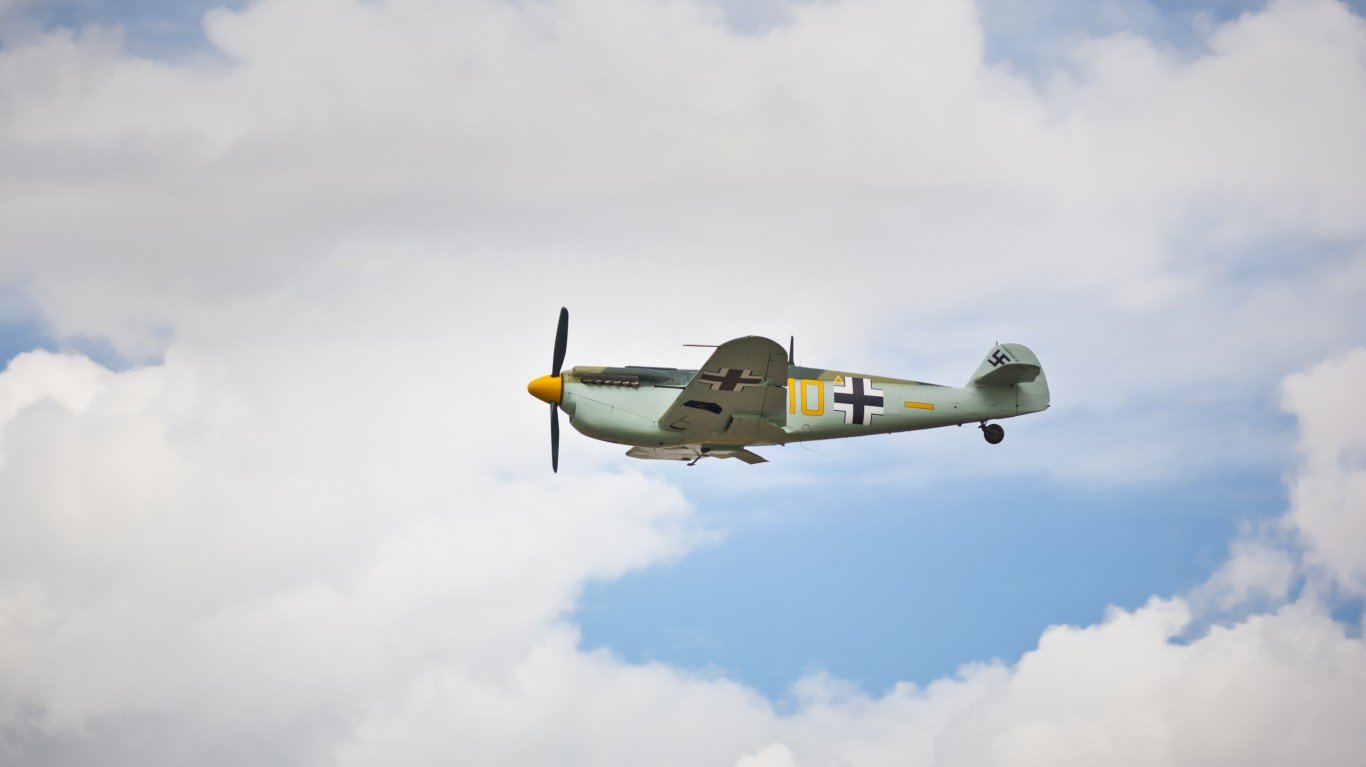
2. Messerschmitt Bf-109
> WWII production count: 33,984
> Aircraft type: Fighter
> Country of origin: Germany
First introduced during the Spanish Civil War, the Messerschmitt Bf-109 was the most widely produced fighter aircraft by Germany in WWII, with nearly 34,000 manufactured. The high production numbers were attributable, in part, to the plane’s simple design. The final version of the Messerschmitt had a 2,000 horsepower engine and could fly at 450 mph.
With limited fuel capacity, the Messerschmitt was not widely used in offensive strikes over the U.K. but was deployed to intercept Allied bombers flying over the continent. The Bf-109 is credited with downing more Allied aircraft than any other plane during the war.
[in-text-ad]
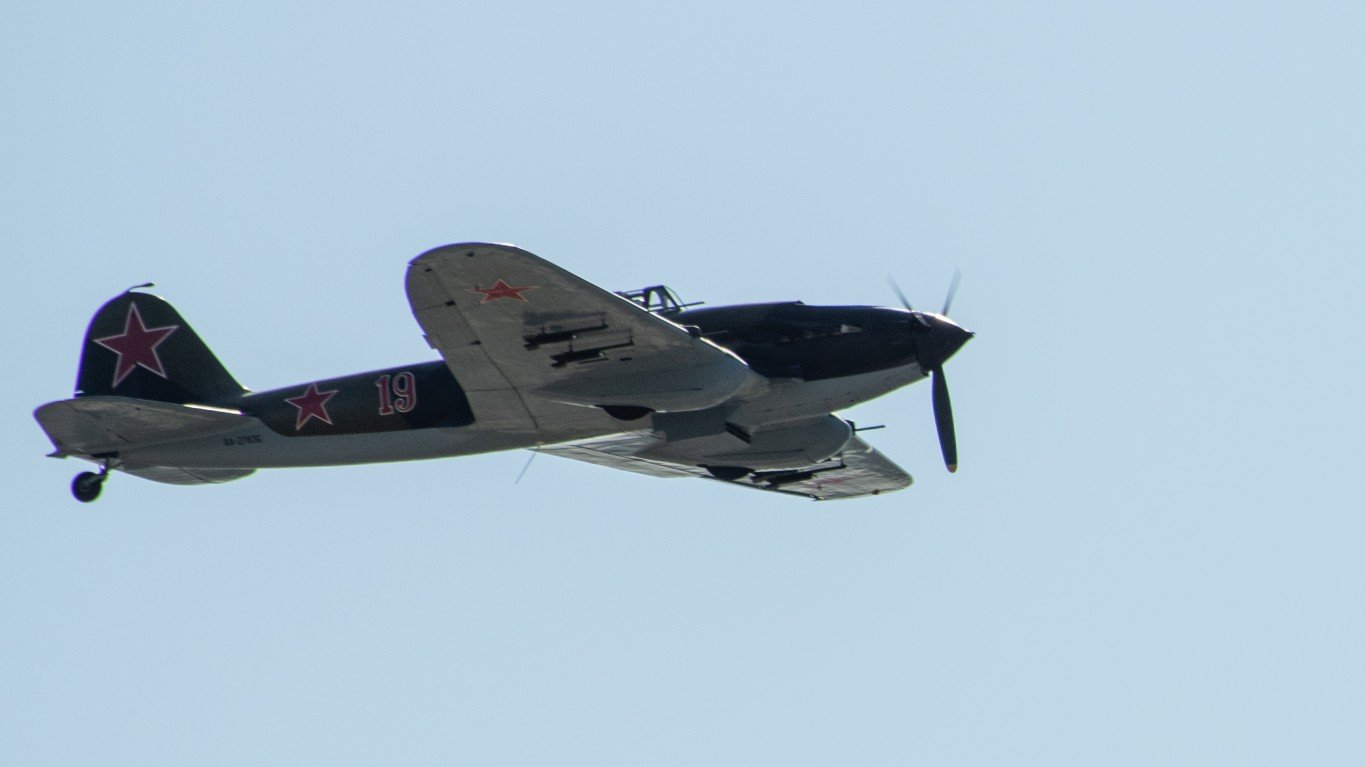
1. Ilyushin Il-2
> WWII production count: 36,183
> Aircraft type: Bomber
> Country of origin: Soviet Union
The Soviet Union churned out over 36,000 Ilyushin Il-2 bombers during WWII, making it the most-produced aircraft of the war. Instrumental in hobbling the German invasion of the Soviet Union, Ilyushin Il-2 began pounding Nazi convoys and infantry within days of the start of their march toward Moscow.
Heavily armored, Ilyushin Il-2s were all but impossible to shoot down with machine guns and 20 mm cannons alone. Capable of carrying about 1,000 pounds of explosives, early versions of the aircraft were single seaters and had two 23 mm cannons and two 7.6 mm machine guns mounted in the wings. Later versions were equipped with two 37 mm cannons and an extra seat for a tail gunner.
Take This Retirement Quiz To Get Matched With An Advisor Now (Sponsored)
Are you ready for retirement? Planning for retirement can be overwhelming, that’s why it could be a good idea to speak to a fiduciary financial advisor about your goals today.
Start by taking this retirement quiz right here from SmartAsset that will match you with up to 3 financial advisors that serve your area and beyond in 5 minutes. Smart Asset is now matching over 50,000 people a month.
Click here now to get started.
Thank you for reading! Have some feedback for us?
Contact the 24/7 Wall St. editorial team.
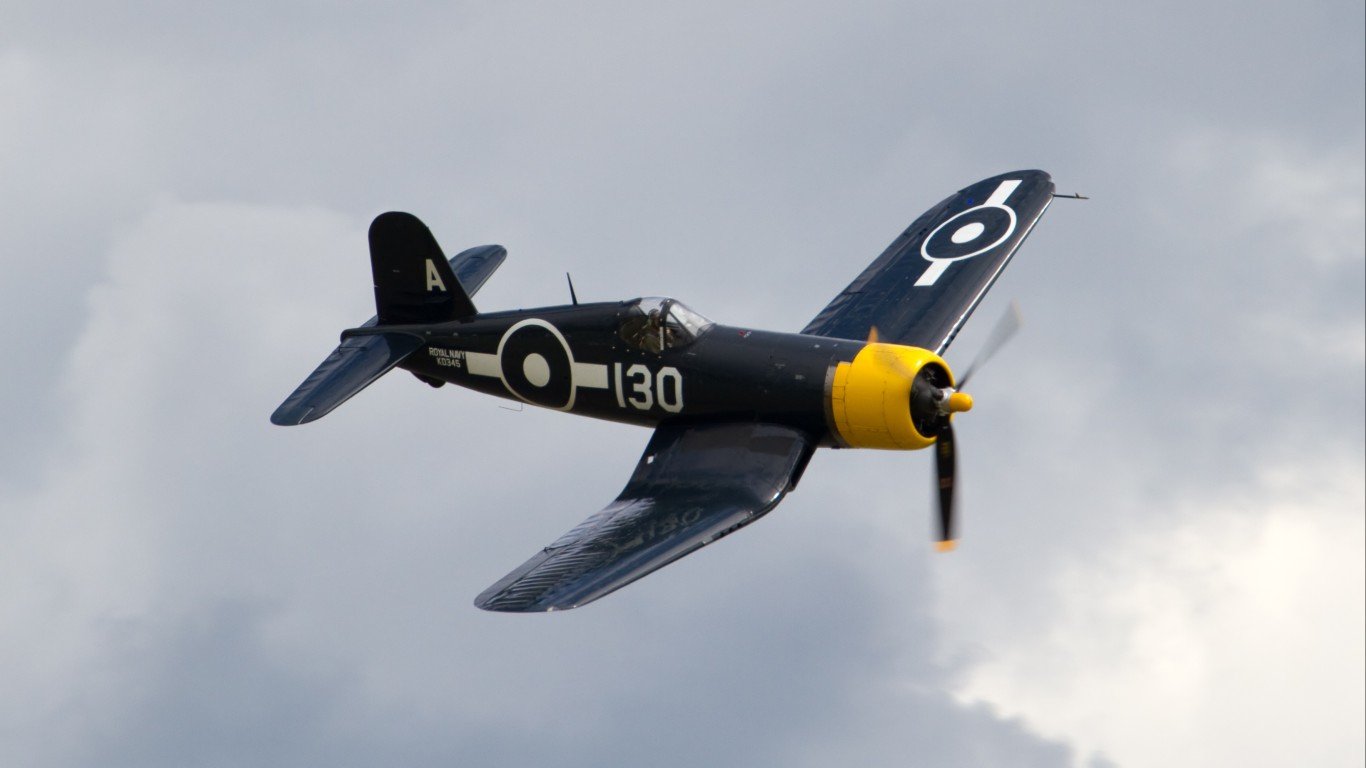
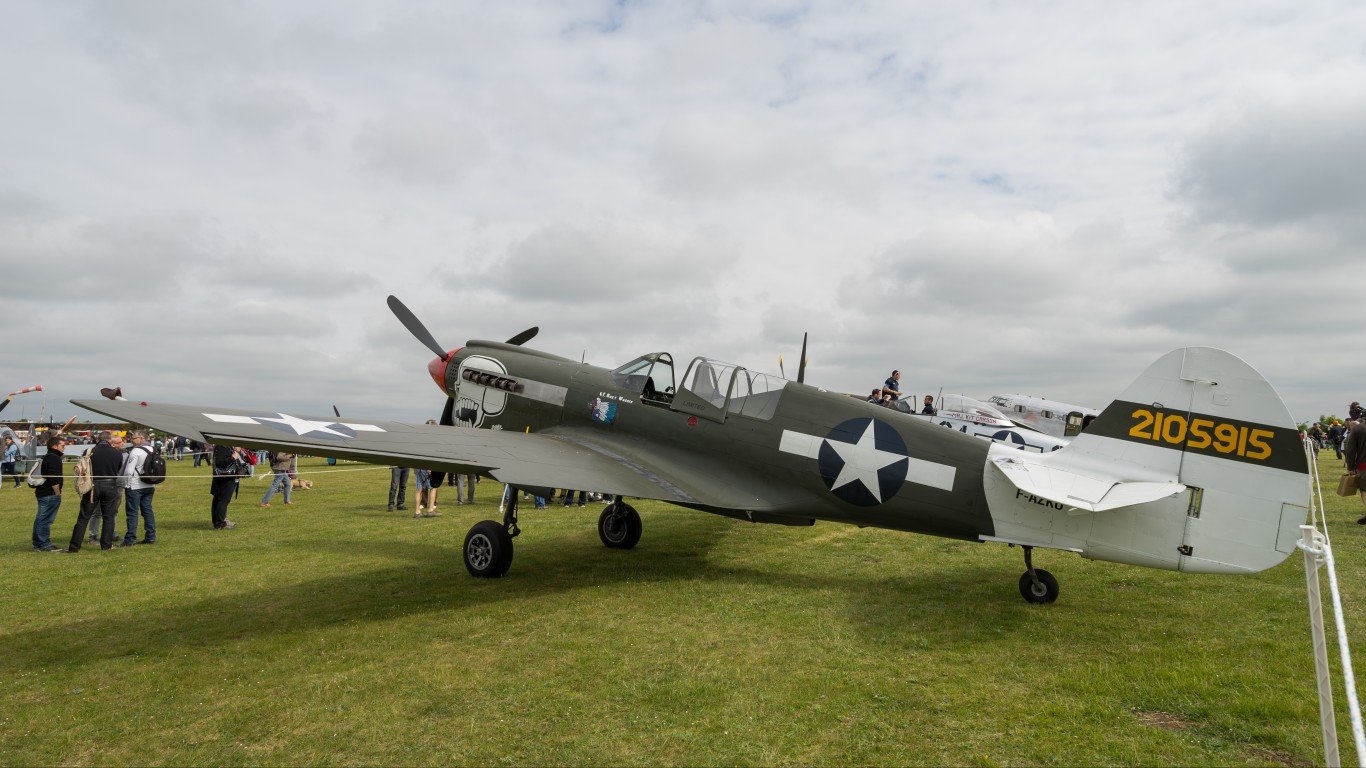
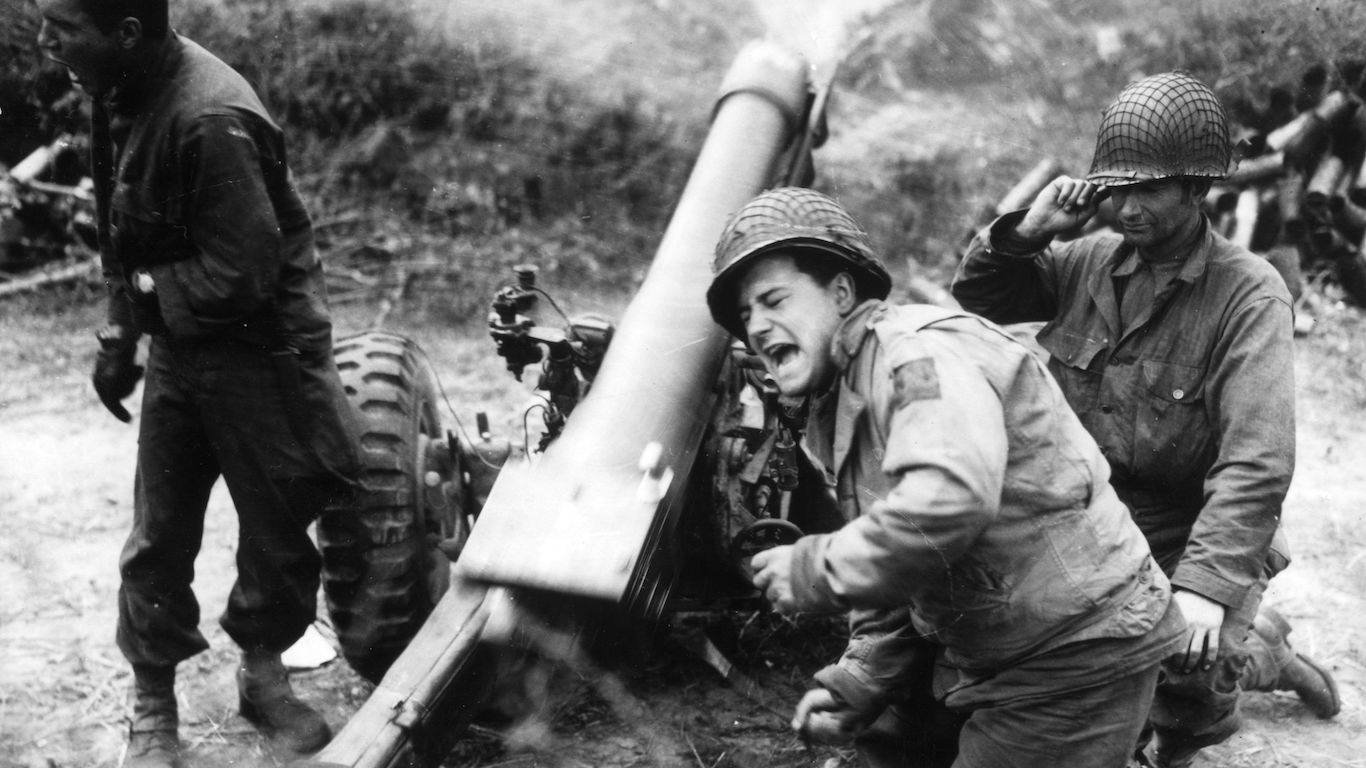 24/7 Wall St.
24/7 Wall St.